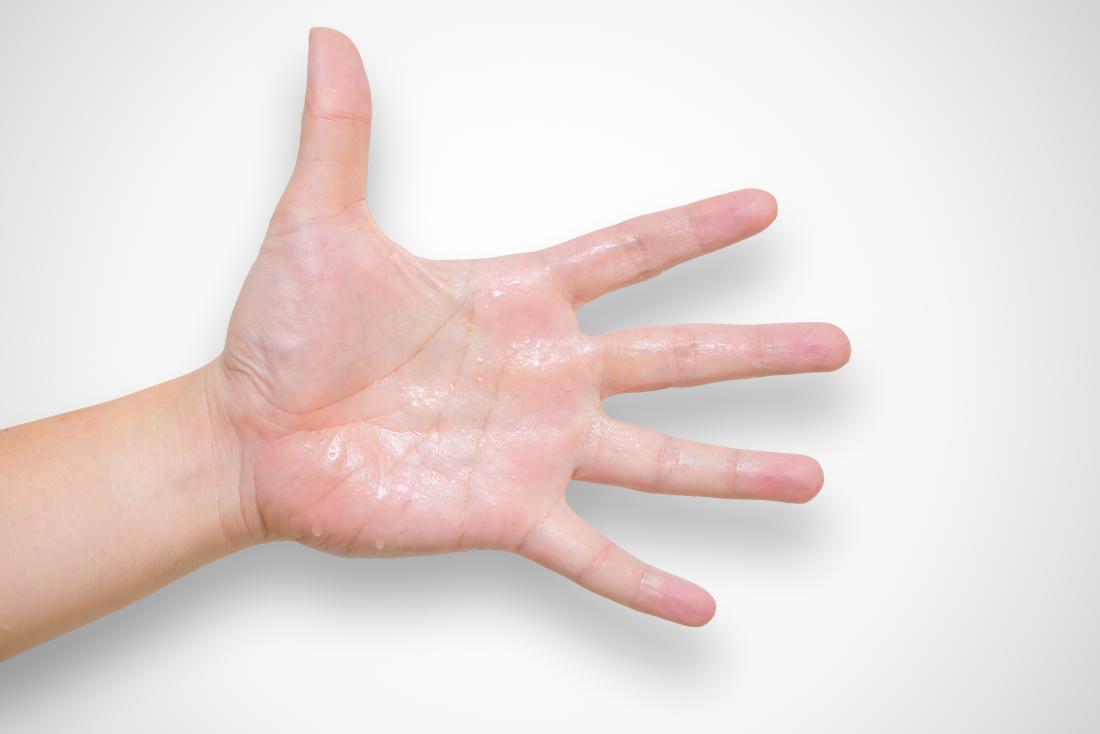Comprehending Excessive Sweating: Dermatology Insights on How to Stop Sweaty Hands
Comprehending Excessive Sweating: Dermatology Insights on How to Stop Sweaty Hands
Blog Article
Revealing the Intricacies of Excessive Sweating: A Comprehensive Overview to Medical Diagnosis and Administration
Extreme sweating, medically known as hyperhidrosis, is a problem that affects a substantial number of people and can have an extensive influence on their quality of life. While sweating is a natural bodily function, its overactivity in hyperhidrosis provides an one-of-a-kind set of challenges that typically go beyond mere pain.

Understanding Hyperhidrosis Causes
Hyperhidrosis causes can be connected to different aspects such as genes, hormone imbalances, and certain clinical problems. Genes play a substantial function in main focal hyperhidrosis, where individuals inherit the condition from their relative. This kind of hyperhidrosis often materializes in details locations like the palms, soles of the feet, underarms, and face. Hormonal imbalances, particularly an over active thyroid gland or menopausal adjustments, can additionally activate extreme sweating. Additionally, specific medical problems such as diabetes mellitus, cardiovascular disease, and infections can bring about additional generalised hyperhidrosis. These underlying health problems can interrupt the body's all-natural cooling system, creating the sweat glands to come to be overactive. Comprehending the origin of hyperhidrosis is crucial in identifying and properly managing this problem. By recognizing the certain factors adding to extreme sweating, doctor can tailor therapy strategies to deal with the underlying cause, using relief and boosting the lifestyle for people affected by hyperhidrosis.
Recognizing Hyperhidrosis Symptoms

In addition, hyperhidrosis signs and symptoms may manifest in social and psychological distress, as individuals may really feel ashamed or anxious concerning their sweating, causing avoidance of social circumstances (Treatment for hyperhydrosis of hands and feet). Furthermore, repeated episodes of too much sweating can result in skin maceration, fungal infections, and a general decline in self-confidence
Diagnostic Process for Hyperhidrosis
Initiating the diagnostic procedure for too much sweating includes detailed examination of the individual's case history and health examination. Asking concerning the start, duration, and causes of sweating episodes is important to differentiate between key focal hyperhidrosis and additional generalised hyperhidrosis. Medical history needs to also include inquiries about medicines, clinical problems, and family background of hyperhidrosis.
During the physical exam, particular interest is paid to the locations affected by sweating. The doctor might assess the degree of sweating, look for indicators of underlying conditions, and assess the influence of sweating on the individual's quality of life. Furthermore, particular examinations like the gravimetric test, starch-iodine test, or skin conductance dimensions might be performed to quantify the amount of sweat produced.
Moreover, in instances where second hyperhidrosis is believed, added tests such as blood tests, urine tests, and imaging studies might be advised to identify the underlying reason for excessive sweating. The analysis procedure intends to precisely figure out the kind and reason of hyperhidrosis to assist proper administration techniques.
Treatment Options for Hyperhidrosis
When addressing excessive sweating, various therapy choices are offered to reduce symptoms and boost the person's lifestyle. The treatment approach for hyperhidrosis relies on the intensity of symptoms and the client's reaction to first treatments.
Topical therapies, such as aluminum-based antiperspirants, are usually suggested as the initial line of defense for taking care of light cases of hyperhidrosis. For individuals with extra severe signs and symptoms, oral medicines like anticholinergics may be recommended to aid decrease sweating.

Effective Monitoring Approaches
To efficiently manage hyperhidrosis, a customized and detailed treatment strategy customized to the individual's certain requirements and response to previous treatments is crucial. Iontophoresis, involving the usage of a reduced electrical present to lower sweat gland activity, can be beneficial for both palmoplantar and axillary hyperhidrosis. A multidisciplinary approach including skin doctors, key care physicians, and, if required, cosmetic surgeons, can enhance the management of hyperhidrosis.
Conclusion
To conclude, hyperhidrosis is a condition defined by excessive sweating, which can significantly impact a person's lifestyle. By understanding the reasons, acknowledging the signs, and undergoing the diagnostic process, doctor can successfully handle this problem. Treatment alternatives include topical drugs, oral medicines, shots, and also surgical procedures in serious cases. With correct diagnosis and management techniques, people experiencing hyperhidrosis can discover alleviation and enhance their general wellness.
Too much sweating, clinically understood as hyperhidrosis, is a problem that influences a substantial number of people and can have a profound impact on their high quality of life. By determining the specific variables contributing to excessive sweating, medical care providers can customize therapy plans to resolve the underlying cause, offering alleviation and improving the high quality of life for individuals influenced by hyperhidrosis.
Hyperhidrosis, defined by excessive sweating past what is necessary for controling body temperature level, can substantially impact a person's high quality of life. Making inquiries concerning the beginning, period, and causes of sweating episodes is crucial to separate between main focal hyperhidrosis and second generalized hyperhidrosis. How to stop sweaty hands.In verdict, hyperhidrosis is a condition characterized by extreme sweating, which can considerably affect an individual's top quality of life
Report this page